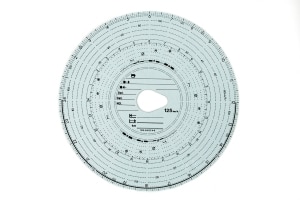
Rest periods and driving times for trucks
The statutory driving and rest periods are defined in the Working Hours Act as well as in the Passenger Ordinance and the Passenger Traffic Act in Germany for goods traffic. These regulations are intended to allow truck drivers to ensure correct breaks and to determine how long they may be on the road.
The periods of driving and resting are valid for professional drivers with vehicles including a trailer or semi-trailer over 3.5 t permissible gross weight in commercial goods and passenger transport. In addition, the driving times for bus drivers apply equally. In general it can be said that the driving time must not exceed the time of 4.5 hours. Afterwards, a professional driver must observe a break or a "driving time interruption" of 45 minutes. This time is not included in the daily rest period. If there is an overshoot of the steering time, high pencil fields are due.
The driving and rest periods for truck drivers have been introduced to reduce the risk of accidents on the road. Due to wrong scheduled breaks or non-compliance of this and regular overtime it came to fatigue of professional drivers and thus quite many road accidents . The legally stipulated driving and resting times according to the working time law, road map regulation and social regulations in Germany should thus ensure the protection of the occupational group. In addition, this Germany-wide regulation obligation and thus for every company within the sector is binding, so it harmonizes competition.
The driving and rest times in detail
The driving time of truck broken down again in daily driving time and weekly driving time. In the following paragraph these two terms will be explained in more detail.
Truck driving times: Which working hours a truck driver must observe
1. The daytime

Driving times and rest periods of trucks are strictly regulated
At the time of the day, all those activities which are actually related to the work of a professional motorist belong. This includes the time when the vehicle needs to temporarily hold, such as in a traffic jam or stopping for a traffic light, crossing barrier, etc. The daily driving time, therefore, describes the time between rest periods. In addition, these are the actual truck driving hours.
Professional drivers maximum of 9 hours a day, according to driving and rest times in traffic on his. However, they are allowed twice per calendar week increase the daily driving time to 10 hours. Breaks lasting less than 15 minutes do not count towards the daytime when the truck driver is not sitting in front of the steering wheel. Should the duration be known a waiting period in the run, this is not part of the driving time but to other work. These can, for example, be the loading and unloading of goods. The driving time may only be interrupted by a sufficiently long travel interruption as well as by rest periods.
2. The weekly time
A week to determine the driving time begins every Monday 00:00 and ends on Sunday 24 AM. During this time the week time is set. This value may not exceed the number of hours from 56 hours. In addition, the driving time is also defined in the double week. This may not grow according to driving and rest times over 90 hours. To calculate this time, two consecutive calendar weeks must be fed in each case. Again, the legal week is from Monday to Sunday, from 0 to 24 hours.
With a little luck truckers land at the end of your daily driving time on the deposited or unknown resting places. As part of this they experience sometimes bizarre. The website of the Church Trucker collect unusual experiences and provides tips on how the waiting time can spend entertaining.

Driving time interruption: Recovery for truck drivers
Once the driver is not sitting in front of the steering wheel and does not exercise other activities such as loading or unloading, is spoken by a driving period interruption in driving and rest periods. This time should only be used for recreation. After a driving time of 4.5 hours a driving period interruption of at least 45 minutes must be made. Moreover, this time can also be divided into two sections, so that a portion of 15 minutes within the driving time and the second 30 minutes directly after 4.5 hours. If there are several people on the road, the driving and rest times are also valid, so the driving time can also be used on the passenger seat. After the interruption, a further driving time of 4.5 hours starts.
Driving and resting times: overview of daily and weekend rest periods for truck drivers
Not to be confused with the driving time interruptions, the rest period as the time on the day designated in the motorist has no free time and driving hours makes. It does not matter where this time is used. For example, take the rest period on a ferry or train a truck driver, if there is a place to sleep. Of course, the rest period can also be enjoyed in the vehicle, as long as the truck has a sleep option and does not drive.
|
Regular rest period |
Reduced rest period |
| Daily rest period |
At least 11 hours (or divided: first 3 followed by 9 hours) |
At least 9 hours and max. 11 hours |
| Weekly rest period |
At least 45 hours |
At least 24 hours and max. 45 hours |
The weekly rest period of 45 or 24 hours is usually taken due to the truck traffic ban on Sundays at the weekend to complete, so it is called in the profession by a weekend rest period the truck. According to the working time regulations for trucks, a new daily rest period must be taken no later than 24 hours after the last daily or weekly rest period for truck drivers. Three times within a week, professional drivers can shorten the daytime rest.
The daily journey of a driver from the place of residence to the place of the company is not included in the driving time, but is counted as rest.
Exceptions of driving and resting times for trucks
As soon as the truck driver interrupts the break or rest period, this is a violation and can with a fine are punished. However, there are exceptions so that the driver can move his vehicle away during the break. If, for example, a motorist wants to place the fire brigade or police station, he may move his vehicle away after being requested by an authority.
A second exception takes effect as soon as the truck driver does not manage to reach a suitable holding position in time, thus resulting in a steering time overshoot. It may deviate from the driving and resting times for lorries, provided that this ensures the safety of persons, their own vehicle or the load. However, the driver must record this deviation of the truck's driving time immediately after he has reached the holding position.
Tachograph vs. Tachograph EC control unit

The tacho disc as a tachograph for trucks
The driving and rest periods must be adhered to, as otherwise fines are due. But how can the times be checked?
The mechanical tachograph, or colloquially known as tachographs or tachograph chart, was a paper disc in goods vehicles in Germany, which were registered before 1 May 2006, the speed of the truck, the distance traveled and the driving and rest periods Recorded. From this date has been the EC recording equipment, or digital tachographs, introduced as a result of an EU regulation, which now acts as a digital tachograph. The device has a chip that stores all important data such as working time.
The truck driver has a driver card with which he registers with the EC control unit. In addition to this card, there is also a workshop, control and company card, with which data on the device can be read out like working hours. This data is secured 365 days on a sealed chip and 28 days on the driver's card, which is tied to a person, ie the driver.
The truck driver comes in a control, a digital tachograph can





















































































